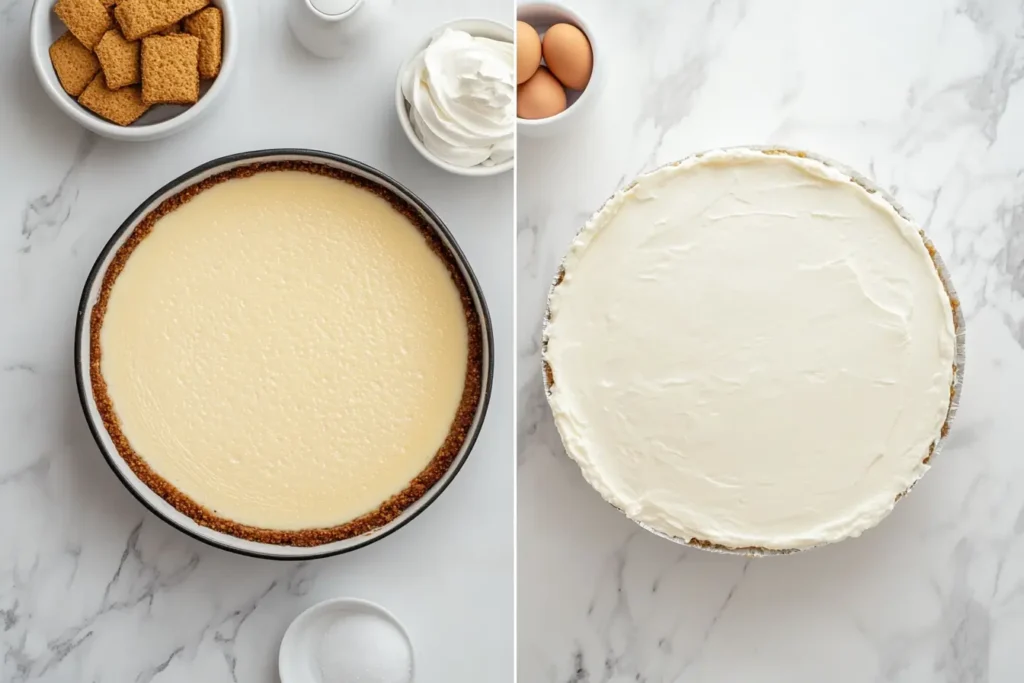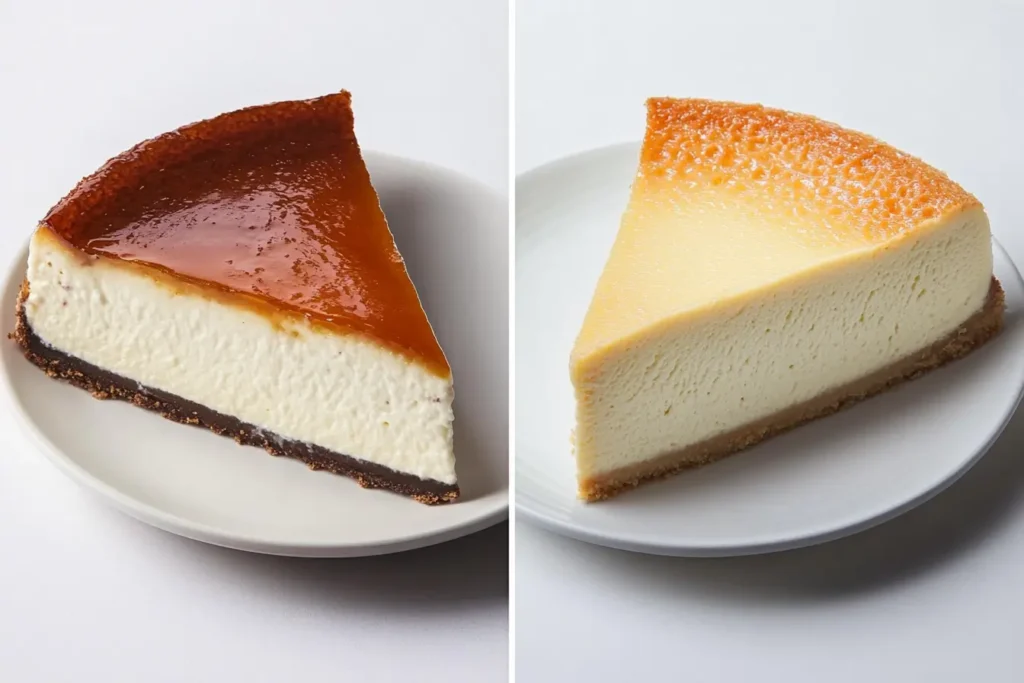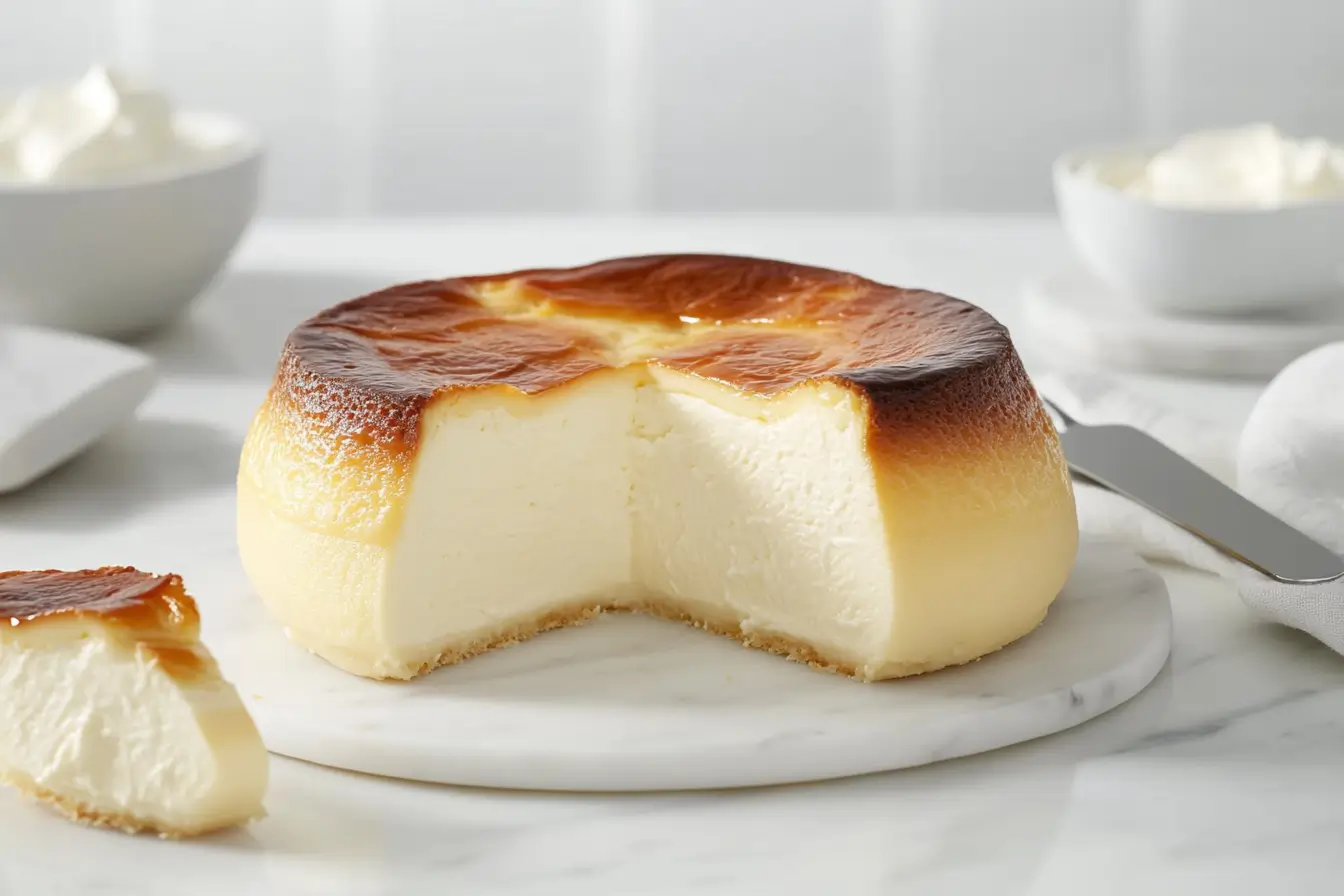Let’s talk about cheesecake—a dessert that holds a special place in the hearts (and stomachs) of dessert lovers everywhere. Whether you’re a die-hard New York-style cheesecake fan or someone who’s fallen in love with the burnt, caramelized goodness of Basque cheesecake, one thing is certain: all cheesecakes are not created equal. The Difference Between Basque Cheesecake and Regular Cheesecake goes beyond just appearance; it comes down to texture, flavor, baking techniques, and even the overall eating experience.
If you’ve ever wondered what sets Basque cheesecake apart from the traditional version, you’re in for a treat. Let’s break down the key differences, from texture and flavor to baking techniques and history.
A Tale of Two Cheesecakes: The Difference Between Basque Cheesecake and Regular Cheesecake
The Classic Cheesecake: A Global Staple
Regular cheesecake, in all its creamy and indulgent glory, has been around for centuries. Its origins trace back to ancient Greece, where a simple mixture of cheese, honey, and wheat was baked into a cake-like form. Fast-forward to modern times, and cheesecake has evolved into a rich, custard-like dessert, popularized in cities like New York, Chicago, and Philadelphia.
New York-style cheesecake, in particular, is famous for its dense and creamy texture, thanks to generous amounts of cream cheese, eggs, and sugar. A graham cracker or cookie crust provides a satisfying contrast to the filling, and it’s often topped with fruit compotes, chocolate drizzles, or whipped cream. If you’re curious about other variations of cheesecake, check out this guide on the three types of cheesecake.
Basque Cheesecake: A Happy Accident from Spain
Basque cheesecake, on the other hand, is a more recent creation. Born in the 1990s in the small Spanish town of San Sebastián, this burnt beauty was invented by chef Santiago Rivera at La Viña restaurant. Unlike its traditional counterpart, Basque cheesecake has no crust and boasts a deeply caramelized top that’s a result of high-temperature baking.
Unlike classic cheesecakes, which are typically uniform and smooth, Basque cheesecake has a rustic, slightly cracked, and sunken appearance. It might look like a baking mishap, but don’t be fooled—Basque cheesecake is intentionally imperfect, and that’s exactly what makes it so special.
The Crust (or Lack Thereof)
One of the most obvious differences between the two cheesecakes? The crust.
- Regular cheesecake: Typically has a graham cracker, digestive biscuit, or cookie crust, creating a structured base that holds the creamy filling. Some versions, like French-style cheesecake, may use a pastry crust.
- Basque cheesecake: No crust. None. Nada. The filling is poured directly into a parchment-lined pan and baked until it naturally forms a slightly firm exterior, while the inside remains incredibly soft and custardy.
If you’re someone who loves the crunchy contrast of a traditional cheesecake crust, Basque cheesecake might seem like it’s missing something. But once you take a bite of its melt-in-your-mouth interior, you won’t even think twice about the missing base.
Texture & Consistency
If texture is a big deal for you (as it should be when it comes to cheesecake!), here’s what you need to know:
- Regular cheesecake: Smooth, creamy, and dense. It’s firm but still soft, thanks to a precise balance of cream cheese, eggs, sugar, and sometimes heavy cream or sour cream. Want to know which ingredient works best? Check out this breakdown of sour cream vs. heavy cream in cheesecake.
- Basque cheesecake: Light, airy, and almost soufflé-like in the center. The outer edges are firm, but the inside remains incredibly creamy—sometimes even gooey, depending on how long it’s baked.
The contrast between the slightly caramelized outer layer and the ultra-soft interior makes Basque cheesecake a dream for texture lovers.

Flavor Profile: The Difference Between Basque Cheesecake and Regular Cheesecake in Taste
When it comes to taste, these two cheesecakes couldn’t be more different.
- Regular cheesecake: Sweet and rich, often enhanced with vanilla extract, lemon zest, or other flavorings. Some variations, like lemon blueberry cheesecake, incorporate fruit for a fresh twist.
- Basque cheesecake: Less sweet and more complex. The caramelized, almost burnt top layer adds a subtle bitterness that balances the creamy, slightly tangy filling.
If you love ultra-sweet desserts, classic cheesecake will probably be your go-to. But if you appreciate a balance of bitter and sweet, Basque cheesecake is a must-try.
Baking Methods: Low & Slow vs. Hot & Fast
A big part of what makes these two cheesecakes so different is how they’re baked.
- Regular cheesecake: Usually baked at a low temperature (around 300–325°F / 150–160°C) for an extended period, often with a water bath to prevent cracks. Some versions, like no-bake cheesecakes, require no baking at all!
- Basque cheesecake: Baked at a high temperature (400–450°F / 200–230°C) for a shorter time. The intense heat creates that signature dark, caramelized top while leaving the inside soft and creamy.
This difference in technique is why Basque cheesecake has a more rustic, freeform shape, while traditional cheesecakes are typically smooth and pristine.
Serving & Presentation
How you serve these cheesecakes also varies quite a bit.
- Regular cheesecake: Often decorated with fruit toppings, chocolate ganache, or a glossy fruit glaze. Some decadent versions, like this Snickers strawberry cheesecake, go all out with candy bars and caramel drizzles.
- Basque cheesecake: No fancy toppings needed! The beautifully burnt top speaks for itself.
If you love a picture-perfect dessert, traditional cheesecake is your best bet. But if you’re all about that rustic, effortlessly beautiful look, Basque cheesecake has you covered.
Which One Should You Try?
At the end of the day, choosing between Basque cheesecake and regular cheesecake comes down to personal preference.
Go for regular cheesecake if you love:
- A classic, smooth, and creamy texture
- A crunchy, buttery crust
- Sweet flavors with the option to add fruity or chocolatey toppings
Try Basque cheesecake if you prefer:
- A lighter, airy, and almost custard-like texture
- No crust (all about that creamy center!)
- A slightly caramelized, bittersweet flavor

Nutritional Comparison of Basque and Regular Cheesecake
Understanding the nutritional differences can help in choosing between Basque and regular cheesecake. For more information about the health aspects of cheesecake, visit Healthline for expert insights and healthier recipe suggestions. . Here’s a side-by-side comparison of their nutritional values per slice (~100g):
| Nutrient (Per Slice – ~100g) | Basque Cheesecake | Regular Cheesecake |
|---|---|---|
| Calories | ~320 kcal | ~350 kcal |
| Total Fat | 24 g | 26 g |
| Saturated Fat | 14 g | 16 g |
| Cholesterol | 130 mg | 120 mg |
| Sodium | 220 mg | 240 mg |
| Total Carbohydrates | 21 g | 28 g |
| Sugars | 18 g | 23 g |
| Protein | 6 g | 7 g |
| Dietary Fiber | 0 g | 1 g |
Final Verdict: Two Amazing Cheesecakes, One Delicious Decision
No matter which cheesecake you choose, one thing’s for sure—you’re in for a delicious experience. If you’re feeling adventurous, why not try both and see which one wins your heart? Whether you stick to the comforting, familiar flavors of a classic cheesecake or fall in love with the burnt, creamy magic of Basque cheesecake, there’s no wrong choice here.
Also, if you’re a health-conscious cheesecake lover, you might want to check out this guide on the nutrition benefits and downsides of cream cheese.
So, which one will you bake first?

